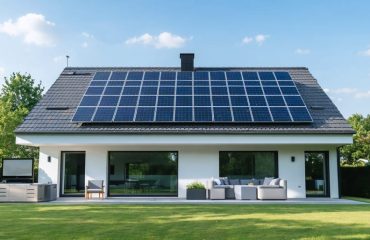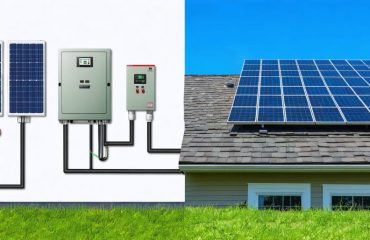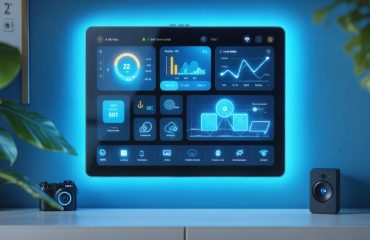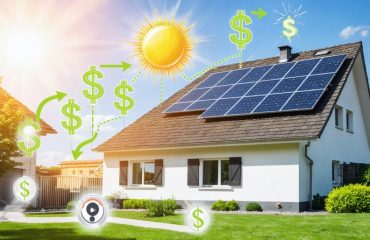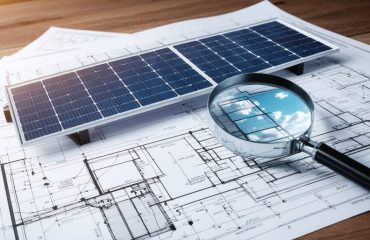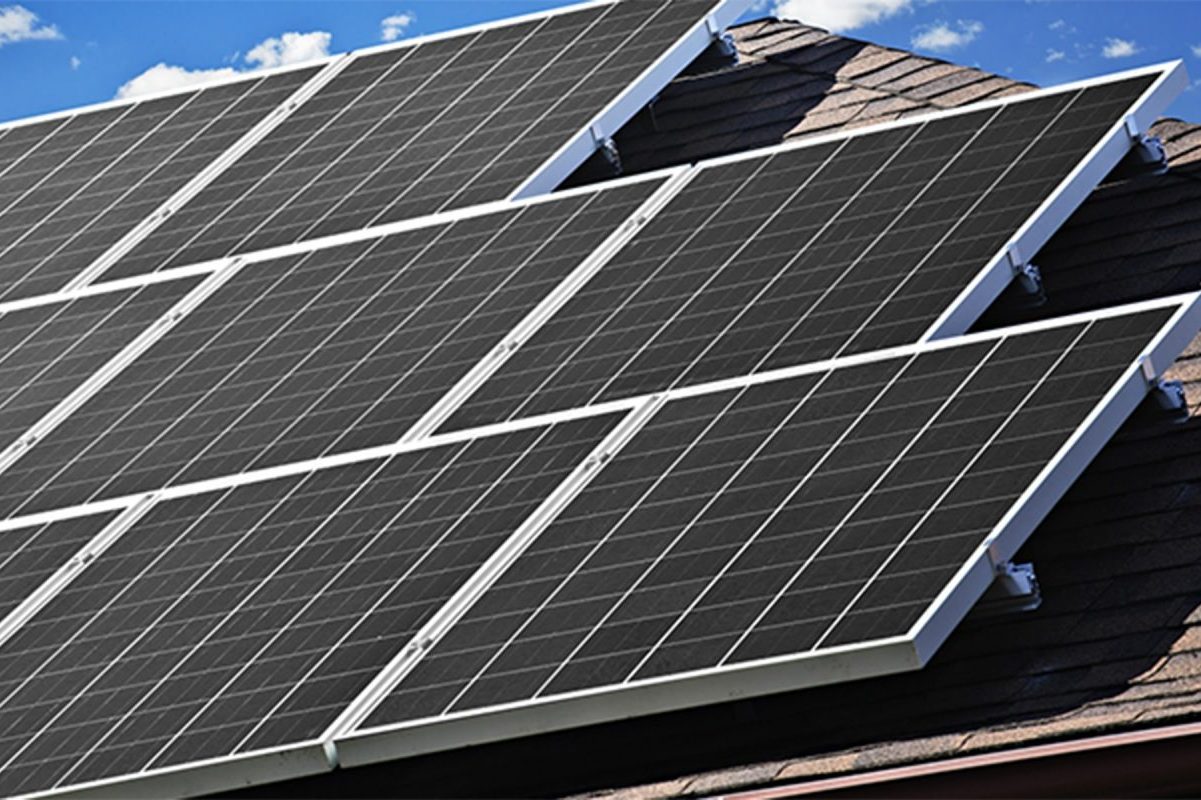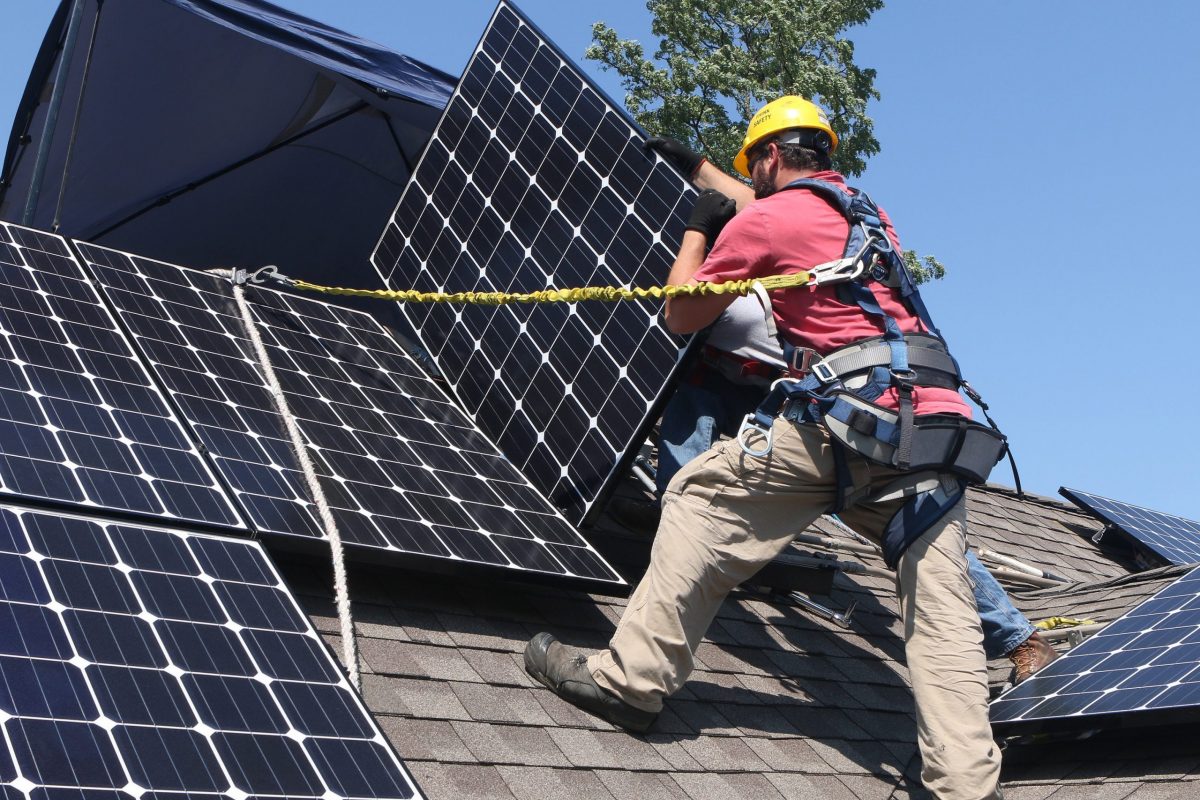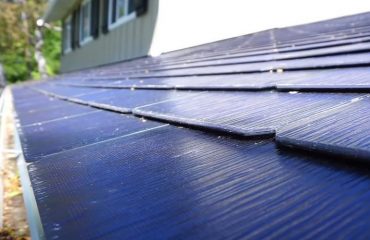Imagine powering your home with a system that combines the best of both worlds – clean solar energy and reliable grid power, working in perfect harmony. Hybrid photovoltaic systems represent the next evolution in residential energy solutions, offering homeowners unprecedented control over their power consumption and costs. By intelligently integrating solar panels with battery storage and smart grid connectivity, these systems can automatically switch between power sources to optimize efficiency and savings.
Unlike traditional solar setups, hybrid systems provide continuous power even when the sun isn’t shining, eliminating the common concern of solar reliability. During peak sunlight hours, these systems generate clean energy for immediate use while storing excess power in batteries for later consumption. When grid electricity prices spike during evening hours, the system seamlessly transitions to stored solar energy, maximizing cost savings and reducing dependence on utility companies.
For environmentally conscious homeowners seeking energy independence without compromising reliability, hybrid photovoltaic systems offer a practical and financially sound solution. With federal tax incentives and declining equipment costs making these systems increasingly accessible, now is the ideal time to consider this innovative approach to home energy management.
What Makes a Solar System ‘Hybrid’?
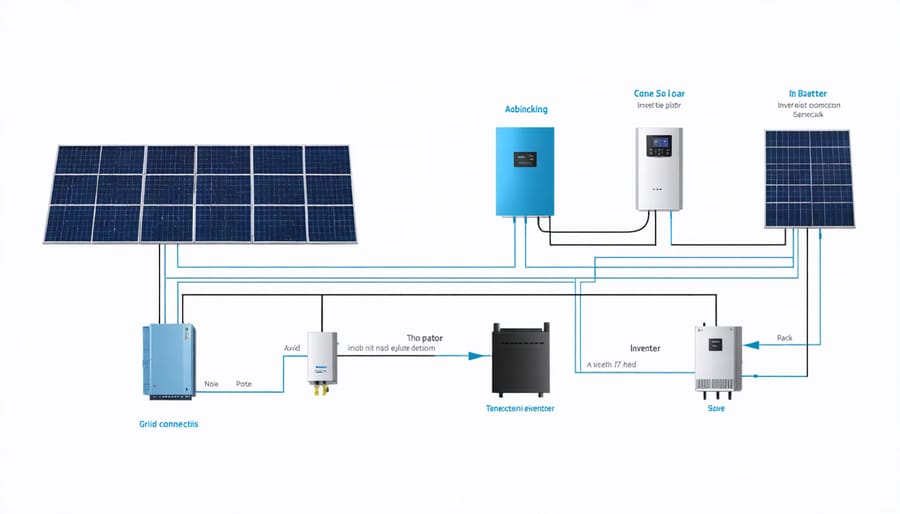
Grid Connection + Battery Storage
A hybrid photovoltaic system’s grid connection and battery storage solutions work together seamlessly to ensure reliable power supply while maximizing energy independence. During daylight hours, your solar panels generate electricity for immediate use, while excess energy charges your batteries. When solar production is low or during nighttime, the system automatically draws power from your batteries first, only connecting to the grid when needed.
This intelligent power management means you’re using clean solar energy even after sunset, reducing your reliance on grid electricity and lowering utility bills. The system also provides backup power during outages, keeping essential appliances running when the grid fails. Modern hybrid systems include smart controllers that learn your energy usage patterns, automatically switching between power sources to optimize efficiency and savings.
By combining grid connectivity with energy storage, you get the best of both worlds: the reliability of grid power and the independence of solar, all while maintaining a smaller carbon footprint and more predictable energy costs.
Smart Energy Management
The heart of a hybrid photovoltaic system lies in its intelligent power management capabilities. Modern systems utilize sophisticated controllers and smart home energy management technology to seamlessly coordinate power flow between solar panels, batteries, and the grid. This orchestration ensures you’re always using the most cost-effective power source available.
During sunny days, the system prioritizes solar power for immediate use while storing excess energy in batteries. When solar production decreases or during peak evening hours, the system automatically switches to stored battery power before drawing from the grid. This intelligent switching happens in milliseconds, ensuring uninterrupted power supply to your home.
The system also learns your household’s energy consumption patterns over time, adjusting its operation to maximize efficiency. For example, it might automatically charge batteries during off-peak grid hours or preserve stored energy for times when electricity rates are highest. This smart approach to energy management typically results in significant cost savings and reduced reliance on grid power, making your investment in solar technology even more valuable.
How AI Makes Your Hybrid System Smarter
Real-Time Weather Adaptation
Modern hybrid photovoltaic systems use sophisticated AI algorithms to monitor and respond to weather conditions in real-time. These smart systems analyze weather forecasts, cloud coverage, and historical weather patterns to optimize energy production and storage throughout the day.
When rain or heavy clouds are predicted, the system automatically adjusts its operation to ensure your home has enough stored energy. It might charge batteries more aggressively during sunny periods or switch to grid power when it’s most cost-effective. This predictive capability means you’re never caught off-guard by sudden weather changes.
The AI also learns from your home’s specific environment over time. It recognizes patterns like morning fog in your area or how nearby trees affect panel shading at different times of the year. These insights help the system make better decisions about when to store, use, or sell excess energy.
This weather-smart feature typically results in 15-20% better energy efficiency compared to traditional solar setups, leading to more consistent power supply and lower electricity bills, regardless of weather conditions.
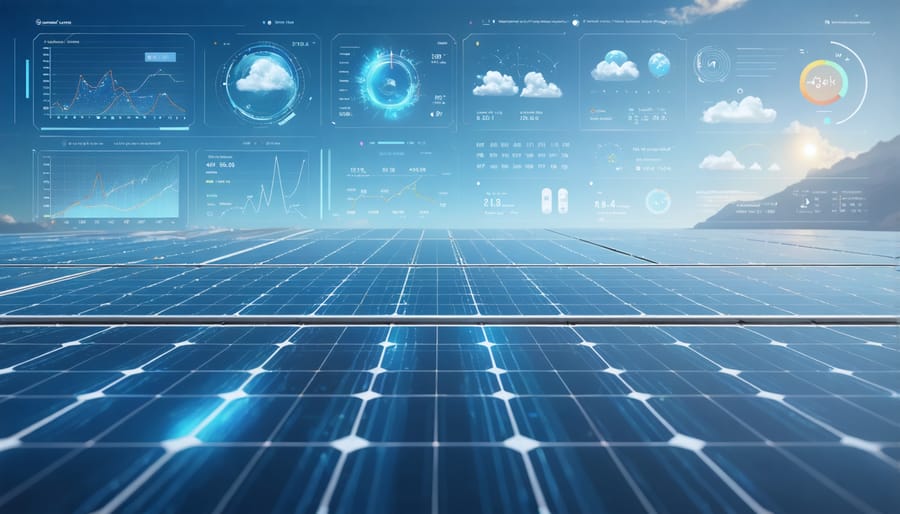
Usage Pattern Learning
Modern hybrid photovoltaic systems employ sophisticated AI algorithms to learn and adapt to your household’s unique energy consumption patterns. By analyzing your daily, weekly, and seasonal energy usage, these smart systems can predict when you’ll need more power and optimize energy storage accordingly.
The AI monitors factors like your typical wake-up time, peak usage hours, and common appliance usage patterns. For example, if you regularly use high-energy appliances in the evening, the system will ensure your batteries are sufficiently charged during the day to meet this demand. This intelligent forecasting helps maximize your solar investment and minimize reliance on grid power.
Weather prediction also plays a crucial role in this learning process. The system can anticipate cloudy days and adjust its storage strategy to ensure you have enough backup power when solar generation might be limited. Over time, the AI becomes increasingly accurate in its predictions, leading to better energy management and cost savings.
This smart technology can even suggest optimal times for running energy-intensive appliances based on solar production and stored energy levels, helping you make the most of your system while reducing your electricity bills.
Automated Energy Trading
Automated energy trading is revolutionizing how hybrid photovoltaic systems interact with the power grid, making solar energy more profitable for homeowners. Smart AI algorithms continuously monitor electricity prices, weather forecasts, and household consumption patterns to make instant decisions about when to use, store, or sell excess solar power.
When electricity rates are high, the system can automatically sell stored energy back to the grid, maximizing your return on investment. During low-rate periods, it can choose to store excess production in batteries for later use or upcoming peak pricing periods. This intelligent trading happens seamlessly in the background, requiring no manual intervention from homeowners.
The AI also learns from your household’s unique energy usage patterns, adapting its strategy to optimize savings. For example, if it notices you consistently use more power in the evening, it will prioritize storing energy during sunny afternoons rather than selling it back to the grid.
Many utility companies now offer time-of-use pricing programs that work perfectly with these automated trading systems. By intelligently managing when you buy, sell, or store power, these smart systems can reduce your electricity bills by an additional 20-30% compared to traditional solar setups.
Real Benefits for Your Home
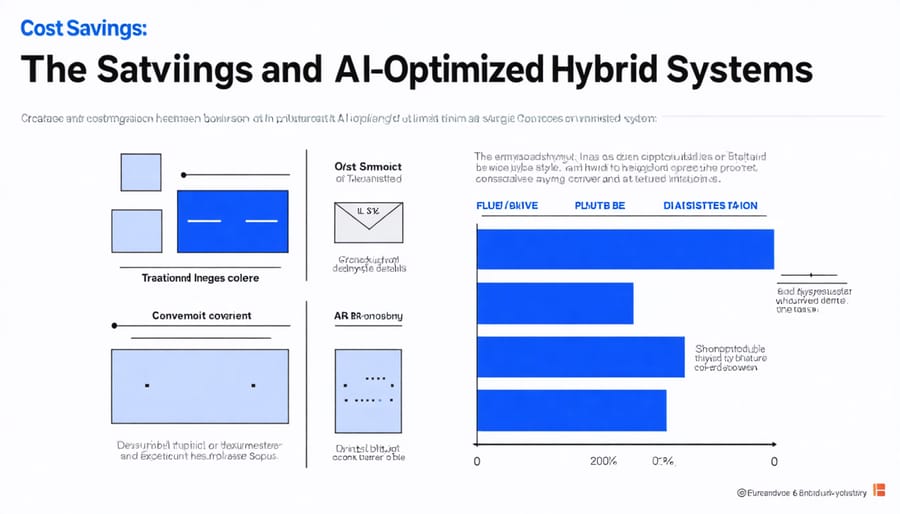
Lower Energy Bills
Installing a hybrid photovoltaic system can significantly reduce your monthly energy bills through several key mechanisms. A typical household can save between 40-60% on their annual electricity costs after switching to a hybrid system. For example, a family spending $200 monthly on electricity might see their bills drop to $80-120, resulting in yearly savings of up to $1,440.
These savings come from multiple sources. First, you’re generating your own clean energy from solar panels during daylight hours. Second, the system’s battery storage allows you to use stored solar energy during peak rate periods when grid electricity is most expensive. Many utility companies charge premium rates during evening hours (typically 4 PM to 9 PM), but with stored solar energy, you can avoid these higher costs.
The AI-powered management system further optimizes these savings by predicting your energy usage patterns and automatically switching between solar, stored, and grid power to minimize costs. For instance, if the system forecasts cloudy weather, it will ensure batteries are fully charged during lower-rate periods to cover your needs.
Many homeowners report reaching their return on investment within 5-7 years, after which the system continues to generate essentially free electricity for decades. Additional savings come through net metering programs, where excess energy is sold back to the grid, and various tax incentives available for renewable energy installations.
Increased Energy Independence
One of the most significant advantages of hybrid photovoltaic systems with AI integration is their ability to dramatically increase your energy independence. These smart systems continuously analyze your household’s energy consumption patterns and solar production, making real-time decisions to optimize power usage and storage.
When your solar panels generate excess electricity during sunny periods, the AI determines whether to store this surplus in batteries for later use or feed it back to the grid for credits. This intelligent management means you’ll rely less on grid power during peak consumption hours or cloudy days, potentially reducing your electricity bills by up to 80%.
The system’s predictive capabilities also play a crucial role in energy independence. By monitoring weather forecasts and historical usage data, the AI can prepare for upcoming periods of low solar production by ensuring batteries are fully charged. During extended power outages, the system automatically switches to stored power, keeping essential appliances running without interruption.
For homeowners, this enhanced independence means more than just savings – it provides peace of mind knowing that your home can maintain power even when the grid fails. The AI’s ability to balance power sources, manage storage, and adapt to changing conditions makes hybrid systems an intelligent investment in your home’s energy future.
Extended System Lifespan
Modern hybrid photovoltaic systems equipped with AI optimization technology significantly extend the lifespan of your solar investment. By continuously monitoring and adjusting system performance, AI helps prevent unnecessary wear and tear on components while maximizing energy production throughout the system’s lifetime.
The intelligent monitoring system tracks performance metrics in real-time, detecting potential issues before they become serious problems. This proactive approach to maintenance means fewer unexpected repairs and reduced downtime. When combined with smart solar upgrades, these systems can maintain peak efficiency for years beyond traditional setups.
AI optimization also ensures your batteries charge and discharge at optimal rates, preventing degradation from overcharging or deep cycling. This careful management can extend battery life by up to 40%, representing significant savings on replacement costs. The system automatically adjusts its operation based on weather forecasts, usage patterns, and component health, ensuring every part of your solar installation operates within ideal parameters.
For homeowners, this means more value from their initial investment, with many AI-optimized systems maintaining over 90% of their original efficiency even after a decade of operation. The result is a more reliable, longer-lasting energy solution that continues to deliver optimal performance and savings year after year.
As we’ve explored throughout this article, hybrid photovoltaic systems represent a significant leap forward in home energy management, especially when enhanced with AI optimization. These innovative systems offer the perfect blend of reliability, efficiency, and cost-effectiveness that modern homeowners need in today’s energy landscape.
By combining solar power generation with smart storage solutions and AI-driven management, hybrid systems provide consistent power supply while significantly reducing electricity bills. The ability to automatically switch between grid and solar power, store excess energy for later use, and optimize energy consumption patterns makes these systems a practical choice for environmentally conscious homeowners.
The addition of AI technology takes these benefits even further, offering predictive maintenance, weather-based adjustments, and intelligent load management that maximize your investment’s return. With energy prices continuing to rise and climate concerns becoming more pressing, upgrading to an AI-optimized hybrid system isn’t just an environmentally responsible choice – it’s a smart financial decision.
Consider making the switch to a hybrid photovoltaic system today. The initial investment is offset by long-term savings, increased property value, and the satisfaction of contributing to a more sustainable future. With government incentives available in many regions and advancing technology making systems more affordable, there’s never been a better time to embrace this clean energy solution for your home.


